Authors — Sergio Andrés Lobo-Navia
-
How to Deliver Your Film to a Festival (2022 Edition)
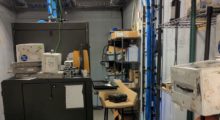
In 2018, I wrote a version of this article1 that treated the exhibition dominance of Digital Cinema Packages (DCP) as a historic certainty. Technology had advanced enough where the cost and/or ability to create a DCP were no longer considered a burden for independent filmmakers. As always with historic certainty, history happened: The COVID-19 pandemic catalyzed the widespread adoption of virtual film festivals. Separately, the call for justice and equality led to the widespread adoption of accessibility features for films. These concurrent developments, combined with the decline of the theatrical market and technological obsolescence, have created an environment that can […]
by Sergio Andrés Lobo-Navia on Apr 14, 2022 -
Get Ready to Stream: Delivering a Film in 2020 to a Virtual Festival
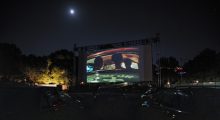
Six months ago, I was considering an update to my now biennial guide on how to prepare your film for festival exhibition. The 2018 version of that guide is available on the Filmmaker website and is a good reference if you are showing your film at a drive-in or outdoor screening that has a DCP server or some other file-based playback system. However, the majority of festival screenings happening this fall and into next year will be on virtual festival platforms. Pre-pandemic, I would’ve told you that the widespread adoption of a streaming component to festivals was as likely as […]
by Sergio Andrés Lobo-Navia on Oct 28, 2020 -
How to Deliver Your Film to a Festival (2018 Edition)
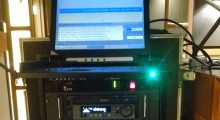
Back in 2015, I wrote an article for Filmmaker on the best practices for delivering an exhibition copy of your film to festivals. In the ensuing two and a half, almost three years, I’ve received a lot of positive feedback, including a few panicked emails from filmmakers submitting their films to a festivals I worked at. Now in 2018, my editors have asked me to update it. Why the update now? Allow me the use of a clumsy and imperfect technical reference to Moore’s law that computing power doubles every eighteen months and the same has happened to available filmmaking […]
by Sergio Andrés Lobo-Navia on May 1, 2018 -
Keystone Cop: Why 1.66 and 1.78 Aspect Ratios Are Often Misprojected (And How to Fix That)

Jackie, Fox Searchlight’s best hope for 2016 Oscar glory, will be improperly projected throughout the world. There will be the usual projection mistakes and corporate carelessness that have become the norm in today’s multiplexes, but Jackie’s 1.66 aspect ratio will be presented keystoned more often than not: instead of a narrow rectangle that is 1.66 times longer than tall, the tops of the image will either curve inward or outward in relation to the screen. It’s an easily corrected mistake that is being ignored because of laziness. Since most projection booths are devoid of projectionists who can fix the problem, […]
by Sergio Andrés Lobo-Navia on Jan 18, 2017 -
Jon Vogl on Budgeting for Post Production Sound, Transitioning From Film to Digital Dubbers, and Con Air‘s Place in Sound History
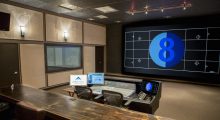
On a shady street in New Orleans’ Lower Garden District you’ll find Second Line Stages’ annex building, where Apex Post Production is located. Depending on the day you arrive, you might witness an ADR session for Antoine Fuqua’s The Magnificent Seven or Ava DuVernay’s new TV show Queen Sugar. The man running the ADR session is Jon Vogl, a Los Angeles transplant and studio veteran who moved to New Orleans to take advantage of increased film and TV production in the state. In this sit-down we discuss the technological changes that he’s witnessed in his twenty-plus years working in post-sound […]
by Sergio Andrés Lobo-Navia on Jan 9, 2017 -
Negative Aspects
Aspect ratios are a film’s canvas; the size of your frame determines the look of your film and is one of the essential questions that a filmmaking team faces in preproduction. Lawrence of Arabia wouldn’t be Lawrence of Arabia if it wasn’t for its incredible widescreen cinematography and sense of scale. Filmed with anamorphic lenses and screened in both 35mm and 70mm, the film was shot and projected at a 2.20:1 aspect ratio. Properly presented in movie houses, the widescreen image would be masked to remove the negative space around the image that we commonly call letterboxing. One would think […]
by Sergio Andrés Lobo-Navia on Jul 25, 2016 -
How a DCP Gets Made

“I was once Inside Llewyn Davis. Now I am Mad Max: Fury Road.” I came up with that Instagram caption while working a festival in suburban New Jersey last spring. Toward the end of the festival, UPS made a delivery of a couple of battered Deluxe/Technicolor cases that had seen better days. The label on the box read Tina’s Heroes, which was the secret title that Warner Brothers shipped Mad Max to theaters as. I chuckled at the reference to the hit song from Beyond Thunderdome, and then I looked at all of the other labels. There was a large piece of […]
by Sergio Andrés Lobo-Navia on Apr 21, 2016 -
Long-Term Care: How to Archive Your Film
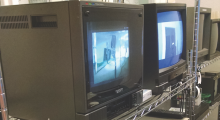
Your film is done. Audiences have laughed and cried while watching it. You got a week-long run in New York and Los Angeles. Soon your aunt in Springfield will be able to watch it on Netflix and have a strained telephone conversation about how “interesting” it is. On to the next project! Not so fast. You need to archive your film now. Put down your storyboard for your next picture and help preserve your old one first. The Film Foundation estimates that “one half of all films made before 1950, and over 80 percent made before 1929 are lost forever.” […]
by Sergio Andrés Lobo-Navia on Jan 20, 2016 -
How to Deliver Your Film to a Festival

Note (May 2018): the updated version of this article can be found here. Format. Codec. Audio. DCP. You’ve worked on your movie now for some time and have been eagerly waiting for acceptance emails from festivals. One lands in your inbox, and you excitedly read through the letter until, when you get to the festival’s technical requirements, you develop a sense of dread. The tersely worded communication from the technical director (glad we could finally meet) would put you to sleep if it didn’t terrify you. But don’t panic. Instead, phone your editor, and read this guide. Caveat emptor, though: […]
by Sergio Andrés Lobo-Navia on Oct 28, 2015
